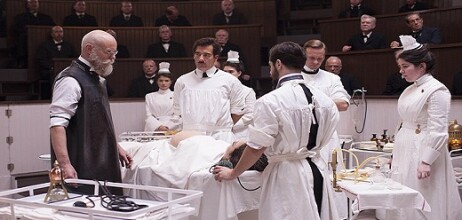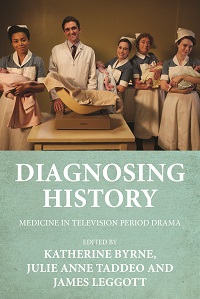During the COVID 19 pandemic public health preoccupied us all like never before. Conversations around vaccination, treatment, hospital resources and the sacrifices of increasingly exhausted medical professionals dominated our screens and our thoughts. At the same time, desperate for distraction, we all watched a great deal more television than usual. Our recent book, Diagnosing History: Medicine in Television Period Drama (Manchester UP, 2022), explores the complex, symbiotic relationship between the two. Long before the pandemic began, viewers have been fascinated by medical television and medical plotlines, with some of the longest running and most popular shows of all time being hospital-set dramas like ER (1994-2009), or docudramas like One Born Every Minute (2010-) and Your Life in their Hands (1958-2005). We, however, looked specifically at television period dramas, which we had noticed were usually either exclusively medical in focus (most famously Call the Midwife, (2012-)) or contained important medical plotlines or characters that were physicians or nurses (almost every other period drama!). When revisiting or reworking the past, including stories about public health and the sick or recuperating body seems essential to a successful show. Even the most glossy and rose-tinted of “heritage” dramas, Downton Abbey (2010-2015) contained some hard-hitting medical subplots like the Spanish ‘flu and the death of Lady Sybil in childbirth; more gritty ones, like Harlots (2017-) explored the representation of syphilis; Poldark (2015-2019) portrayed mental health problems and their treatments. Such a wide range of illnesses across such very different historical shows suggests that medicine provides an accessible and fascinating way of accessing the past, or even, perhaps, that history is at its most compelling for the public when navigated through the diseased or suffering body. By focussing upon it, these shows are able to explore the class and gender issues that impacted upon patients and their care, and the moral implications of the scientific advances that improved so many lives – but often at a cost.


Published: 29 Apr 2022 Categories: Cultural Studies, English Literature, History, Medicine

